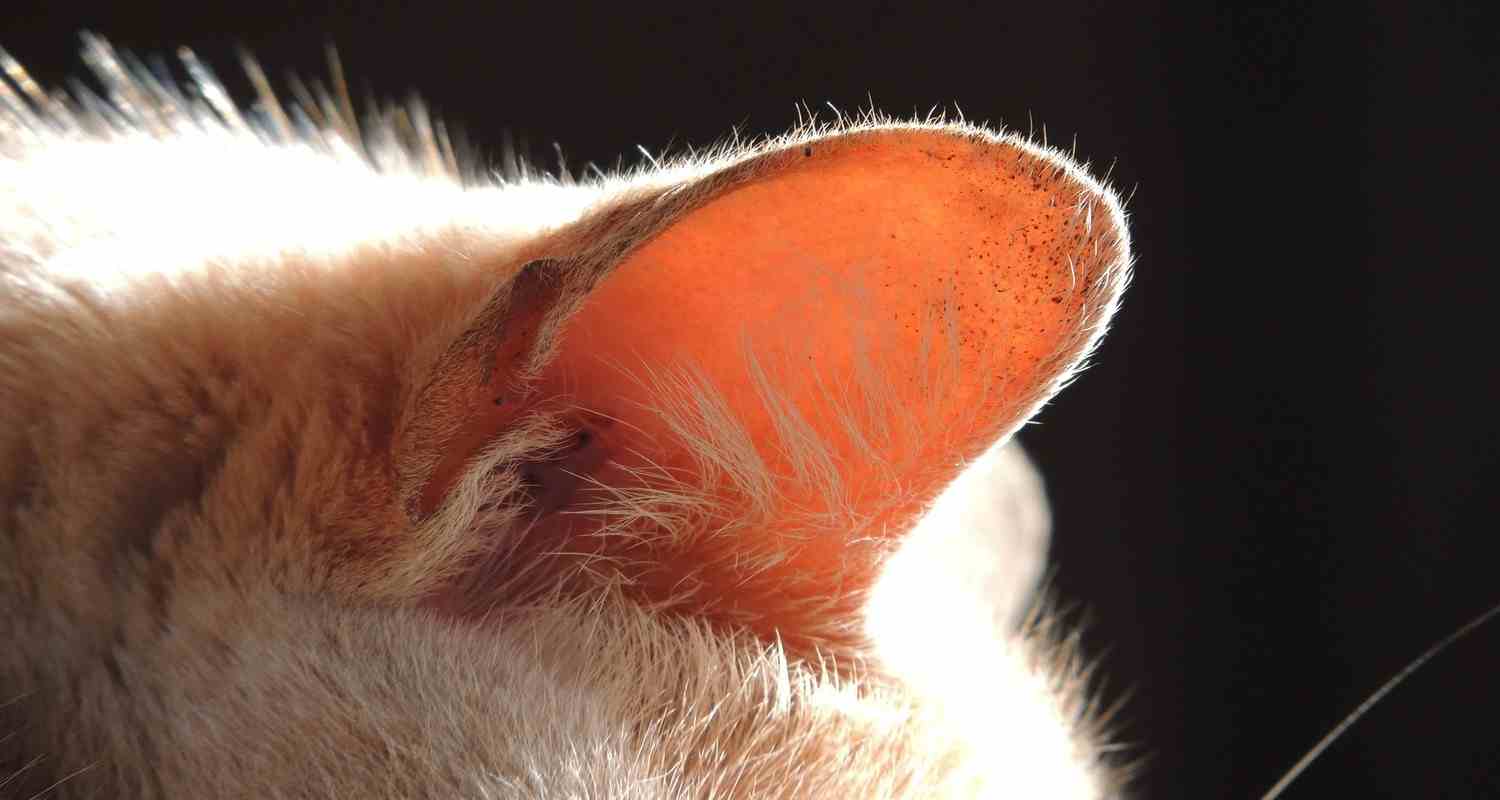How to clean cat ears? Welcome to the ultimate guide on maintaining your feline companion’s ear hygiene! In this comprehensive tutorial, we’ll explore the essential steps and techniques for safely and effectively cleaning your cat’s ears, ensuring their comfort and well-being
Getting Started: Supplies You’ll Need
Before diving into cleaning your cat’s ears, gather these essential supplies to ensure a successful and comfortable experience:
- Cotton balls or pads: Opt for soft, gentle cotton balls or pads that won’t irritate your cat’s ears. These will be used to apply the cleaning solution and wipe away any dirt or wax from the outer ear.
- Veterinary-recommended ear-cleaning solution: Choose an ear-cleaning solution specifically formulated for cats, as human products may contain ingredients that could be harmful to them. Your veterinarian can recommend a safe and effective solution that will help soften and remove ear wax and debris.
- Treats: Select your cat’s favorite treats to reward them for cooperating during the ear-cleaning process. Offering treats can help make the experience more positive and encourage your cat to remain calm and still while you clean their ears.

How Do You Know If Your Cat’s Ears Need Cleaning?
Recognizing when your cat’s ears need cleaning is essential for maintaining their health and comfort. Here are signs that indicate it’s time to clean your cat’s ears:
- Excessive wax buildup: If you notice a significant amount of wax accumulating in your cat’s ears, it’s a clear indication that they need cleaning.
- Foul odor: A strong, unpleasant odor emanating from your cat’s ears could signal the presence of infection or excessive buildup, prompting the need for cleaning.
- Scratching or pawing at the ears: Constant scratching or pawing at the ears may indicate irritation, discomfort, or itching caused by dirt or wax buildup.
- Head shaking or tilting: If your cat frequently shakes or tilts their head to one side, it could be a sign of discomfort or an attempt to dislodge debris from their ears.
- Redness or inflammation: Visible redness, swelling, or inflammation in or around the ears may indicate an underlying issue requiring cleaning and possibly veterinary attention.
How to clean cat ears Step-by-Step?
Cleaning your cat’s ears is an essential part of their grooming routine. Here’s a step-by-step guide to safely and effectively clean your feline friend’s ears:
- Prepare your supplies: Gather cotton balls or pads, a gentle ear-cleaning solution recommended by your veterinarian, and treats to reward your cat.
- Approach your cat calmly: Choose a quiet, calm area for ear cleaning. Gently hold your cat and reassure them with soothing words.
- Inspect the ears: Check for signs of infection, such as redness, swelling, or discharge. If you notice any abnormalities, consult your veterinarian before proceeding.
- Apply the ear cleaning solution: Moisten a cotton ball or pad with the cleaning solution. Be sure not to insert anything deep into the ear canal.
- Clean the outer ear: Gently wipe the outer part of the ear, including the folds, using the moistened cotton ball. Avoid vigorous scrubbing to prevent irritation.
- Massage the base of the ear: Gently massage the base of the ear for a few seconds to help loosen any debris or wax.
- Allow your cat to shake: After cleaning each ear, allow your cat to shake their head to remove any excess solution or debris.
- Reward and praise: Once you’ve finished cleaning both ears, reward your cat with treats and praise for their cooperation.
- Monitor for signs of discomfort: Keep an eye on your cat for any signs of discomfort or irritation after cleaning their ears. If you notice any issues, contact your veterinarian for further guidance.
How to clean cat ears? Benefits
Regularly cleaning your cat’s ears offers several benefits:
- Prevents ear infections: Removing dirt, wax, and debris reduces the risk of bacterial or yeast infections in the ears.
- Promotes ear health: Cleaning helps maintain the cleanliness and pH balance of the ears, reducing the likelihood of irritation or discomfort.
- Early detection of issues: Regular inspection during cleaning allows you to spot any abnormalities, such as redness or swelling, that may indicate underlying ear problems.
- Enhances bonding: Gentle handling during ear cleaning can strengthen the bond between you and your cat, fostering trust and cooperation.
- Improves comfort: Keeping your cat’s ears clean and free of excess wax ensures their comfort and prevents itching or discomfort associated with ear buildup.
How to clean cat ears at home?
Cleaning your cat’s ears at home is a straightforward process, but it’s important to do it carefully to avoid causing discomfort or injury. Here’s a step-by-step guide:
- Gather Your Supplies:
- Cotton balls or pads
- Veterinary-recommended ear cleaning solution
- Treats for rewards
- Prepare Your Cat:
- Choose a quiet, calm area for the cleaning process.
- Sit comfortably with your cat in your lap or on a secure surface.
- Inspect Your Cat’s Ears:
- Gently hold your cat’s head and examine each ear for signs of dirt, wax buildup, redness, swelling, or discharge.
- If you notice any abnormalities or signs of infection, consult your veterinarian before proceeding.
- Apply the Ear Cleaning Solution:
- Moisten a cotton ball or pad with the ear-cleaning solution recommended by your veterinarian.
- Be sure not to insert anything deep into the ear canal. Only clean the visible part of the ear.
- Clean the Outer Ear:
- Gently wipe the outer part of the ear, including the folds, using the moistened cotton ball or pad.
- Avoid vigorous scrubbing to prevent irritation.
- Massage the Base of the Ear:
- Gently massage the base of the ear for a few seconds to help loosen any debris or wax.
- Allow Your Cat to Shake:
- After cleaning each ear, allow your cat to shake their head to remove any excess solution or debris.
- Reward Your Cat:
- Once you’ve finished cleaning both ears, reward your cat with treats and praise for their cooperation.
- Monitor for Discomfort:
- Keep an eye on your cat for any signs of discomfort or irritation after cleaning their ears. If you notice any issues, contact your veterinarian for further guidance.
How to clean cat ears? FaQs
Why do my cat’s ears get so dirty?
There are several reasons why a cat’s ears may become dirty:
- Natural Ear Wax Production: Like humans, cats produce ear wax as a protective mechanism for their ears. Some cats may produce more wax than others, leading to a buildup of dirt and debris.
- Grooming Habits: While cats are generally fastidious groomers, they may not always be able to effectively clean their own ears, especially in hard-to-reach areas. This can result in a buildup of dirt and wax over time.
- Ear Infections: Ear infections, whether bacterial, fungal, or caused by parasites like ear mites, can lead to increased production of ear wax and a buildup of debris in the ears.
- Allergies: Cats can develop allergies to environmental factors, food, or even certain grooming products, which may lead to increased ear wax production and ear irritation.
- Ear Conformation: Some cat breeds, such as those with folded or tightly curled ears, may be more prone to ear wax buildup due to the shape of their ears, which can trap debris more easily.
- External Factors: Environmental factors like exposure to dust, pollen, or other allergens, as well as contact with dirt or outdoor elements, can contribute to dirty ears in cats.
Regular ear cleaning, as recommended by your veterinarian, can help prevent excessive buildup and keep your cat’s ears clean and healthy.
Are you supposed to wash cats’ ears?
Generally, you don’t need to wash a cat’s ears with water and soap like you would wash their body. Cats are typically meticulous groomers and will keep their ears relatively clean on their own. However, you may need to clean your cat’s ears if they have excessive wax buildup, dirt, or other debris. In such cases, it’s recommended to use a veterinary-approved ear cleaning solution specifically formulated for cats, as using water and soap can disrupt the delicate pH balance of their ears and potentially lead to irritation or infection.
What is the black stuff in my cat’s ears?
The black stuff you may find in your cat’s ears could be a combination of wax, dirt, and debris. This buildup is a natural part of the ear-cleaning process for cats. However, excessive black discharge or a foul odor could indicate a problem such as ear mites, infection, or an underlying health issue. It’s important to monitor your cat’s ear health and consult with your veterinarian if you notice any unusual changes or if your cat shows signs of discomfort or irritation.
Is it okay to clean cat ears with wipes?
Yes, it is generally safe to clean cat ears with specially formulated cat ear wipes. These wipes are designed to be gentle on your cat’s ears and can help remove dirt, wax, and debris. However, it’s essential to use wipes specifically made for cats and to follow the manufacturer’s instructions carefully. Avoid using regular cleaning wipes or products not intended for use on cats, as they may contain ingredients that could be harmful to your pet’s ears. If you’re unsure or if your cat has any pre-existing ear conditions, consult your veterinarian before using any ear cleaning products.




